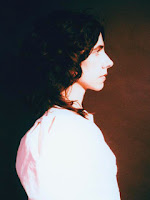I used to say that, if all else fails, I would retire to some obscure place and become a drunk poet... that place usually being some unknown South American villa or colony of artists, poets and intellectuals. Whether such a place exists, I don't know, but its one of my fantasia fallback plans.
In Keat's poem, "Ode to a Nightingale," he seems to have taken a similar path, at least for the night, to recline himself under a tree. Whether drunk with wine or with the ideas he contemplated, I can't tell, but he seems to be in a similar state of mind. Depressed with existence in a world where there is that constant grind, he contemplates an escape by associating his plight with a nightingale that sings through the night.
This is one of my favorite lyrical poems, because it is pensive and speaks of the hardships in this world, yet finds an escape in poetic expression. In the lines, "That I might drink, and leave the world unseen, / And with thee fade away into the forest dim" (l. 19-20) he is referring to drinking from "Hippocrene" (16), the fountain of the muses on Mount Helicon (footnotes, p. 438). Drinking along these lines seems to be a metaphor for using poetry to induce an elevated state of consciousness, used as a kind of sedative.
I adore the fact that he uses a nightingale as a form of lyrical instrument, like the bards who used instruments to perform Odes in the original Greek and later. The nightingale provides the music and he provides the words. His thoughts take on the form of a songbird that may have been the same song heard during the hardships in the lives of people, from kings to peasants, who lived from ancient times through history, such as "the sad heart of Ruth" (66) as she stood, homesick in tears, as a gleaner in a foreign field during a time of famine. Yet the "hungry generations" (62) have not silenced the songbird. As he contemplates the thought of "easeful Death" (52), he realizes the limitations of this kind of vain escape, because he would not be able to hear the song of the bird. He then compares the nightingale to an "immortal Bird" (61) possibly a metaphor for an immortal Bard. Then he speaks of the song of the bard which has been heard down the paths of time.
As the song of the nightingale fades, he recalls the echo of "faery lands forlorn" (70), the very word "forlorn" calls him back to his senses, and he is no longer engaged in his fanciful flight with the bird. His resolution is to ponder the questions at the end, "Was it a vision, or a waking dream? / Fled is that music: -- Do I wake or sleep?" (79-80). The music of the original bards of Odes has not been replicated for centuries, fled is that music, like the nightingale. Yet their songs linger in their words, and they are still relevant as inspiration today. I think Keats finds an escape in being caught up in the ecstasy of these poetic musings and finds inspiration in them, just as his poems continue to inspire us today. He may also be wondering if he, too, will be remembered once he has flown to the next "valley-glade" (78).
Keats, John. "Ode to a Nightingale." In The Longman Anthology, British Literature, Volume B. Ed. David Damrosch. 2nd ed. New York: Pearson Education, 2004. 438-440.
Post Options










